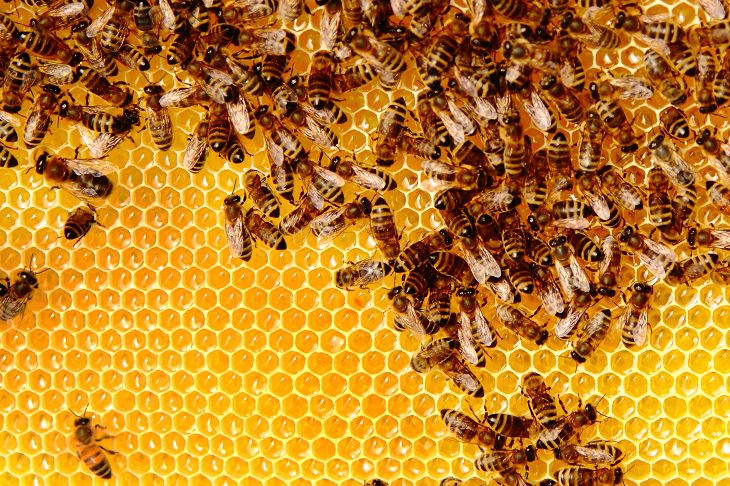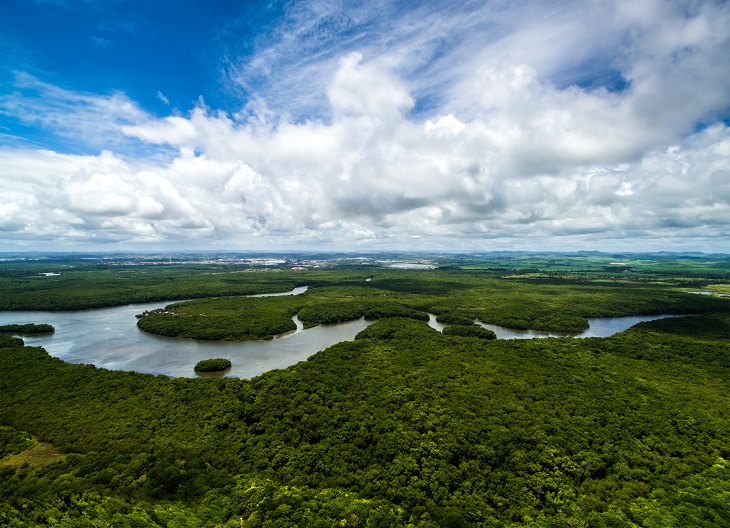1. Scientists have found a way to successfully rebreed sections of the Great Barrier Reef.
The famous Great Barrier Reef is suffering due to unprecedented coral bleaching events. However, the answer to its partial recovery could lie in the reef itself, with a little help from science.
There are two potential interventions that have shown promise when it comes to boosting climate resilience and tolerance in reef corals: assisted evolution and assisted gene flow.
What is assisted evolution?
This is basically artificial selection on steroids - it combines multiple approaches that target the coral host and its essential microbial symbionts. The aim is to produce a hardier coral without the use of genetic engineering.
Firstly, the evolution of algal symbionts in isolation from the coral host have been fast-tracked to resist higher levels of heat stress. When symbionts are made to re-engage with the coral host, benefits to bleaching resistance is still small, but with more work scientists expect to see hardier symbiosis.
Secondly, experiments have created new genetically diverse corals through hybridization and researchers have selected these for increased climate resilience. Natural hybridization rarely happens on the reef, so this gives new options for climate hardening corals using existing genetic stocks.
What is assisted gene flow?
The idea here is to move warm-adapted corals to cooler parts of the reef. Corals in the far north are adapted to higher temperatures than those further south. This means that there is the opportunity to build resistance to future warming in corals in the south under strong climate change mitigation or to decades of warming under weaker mitigation.
There is already natural genetic connectivity of coral populations across most of the reef. However, the rate of larval flow from the warm north to the south is limited, mainly due to the South Equatorial Current that flows west across the Pacific.
This current splits into the north-flowing Gulf of Papua Current and south-flowing East Australian Current off the coast of north Queensland. Therefore, coral larvae spawned in the warm north are often more likely to stay in the north.
So manually transporting some of the northern corals south could help to overcome that physical limitation of natural north-to-south larval flow. If enough corals can be moved it could help heat-damaged reefs recover faster with more heat-resistant coral stock.
2. The snow leopard has been taken off the endangered species list.
According to an international body, for the first time in 45 years, snow leopards are no longer an endangered species.
The International Union for the Conservation of Nature (IUCN) has moved the species into the "vulnerable" category - though it remains at risk due to a reduction in prey and poaching.
To be considered an endangered species, there has to be fewer than 2,500 mature adult snow leopards in the wild, but it is now believed that their true number is anywhere between 4,000 and 10,000. The reason for this wide estimate is because it is extremely difficult to track these big cats across their huge habitats in the Himalayas.
3. HIV/AIDS is no longer the leading cause of death in Africa.
According to the World Health Organization (WHO), fewer people are dying of HIV/AIDS in Africa. Now the leading cause of death are respiratory tract infections such as bronchitis or pneumonia.
HIV/AIDS was responsible for around 760,000 deaths in Africa in 2015, which is a significant decrease from the 1 million deaths records in 2010.
These findings were confirmed by Africa Check, who found that diarrheal diseases took the third spot, with the next leading cause of death being stroke. Malaria dropped out of the top 5 and has been replaced by heart disease.
4. Honey bee populations have increased.
The world needs bees. Declining bee populations have an adverse effect on the agriculture and the environment. In fact, in the U.S., one out of every three bites of food is dependent on bees. Without honey bees, the future would be uncertain at best.
Just over ten years ago, beekeepers started reporting declines in their honeybee populations. Bees were leaving their hives and never returned. This phenomenon, now known as colony collapse disorder, is alarming not only due to the central roles bees play in life, but also because no one knew why the decline was happening or how to stop it.
However, new data released this year has given some reason for optimism. According to this data, honeybee populations are on the rise. As of April 2017, an estimated 2.89 million bee colonies exist across the U.S., an increase of 3% compared to April 2016.
5. Conservationists agreed to plant 73 million trees over the next six years in the Amazon rainforest.
If everything goes to plan, over the next six years, the Amazon will get 73 million new trees. This mass planting is part of a project which is sponsored by Conservation International, the Brazilian Ministry of Environment, and a number of other NGOs and corporations.
The project will span deforested pasture lands over a 74,000-acre region spanning across several of Brazil's states. The greatest focus will be on the Southern Amazonas, Rondônia, Acre, Pará and the Xingu watershed regions.
The purpose of this project is, in part, to revive the 20% of the Amazon that has been lost due to deforestation over the last four decades. It is also geared towards learning how to restore tropical forests.
Reforestation efforts are often very costly and time-consuming - requiring people to grow and plant thousands of saplings, many of which won't survive. However, in this latest effort, the restorationists are using a new method called muvuca, in which they will spread the seeds of native trees across the slash and burned land and animal pastures. The seeds will come from the Xingu Seed Network, which uses a coalition of 400 collectors to gather seeds from native trees.
With plant-by-plant restoration techniques, you get around 160 plants per hectare. However, with muvuca, the initial outcome is 2,500 trees per hectare, and after ten years you can reach 5,000 trees per hectare. It's much more diverse, more dense, and less expensive than traditional techniques.





